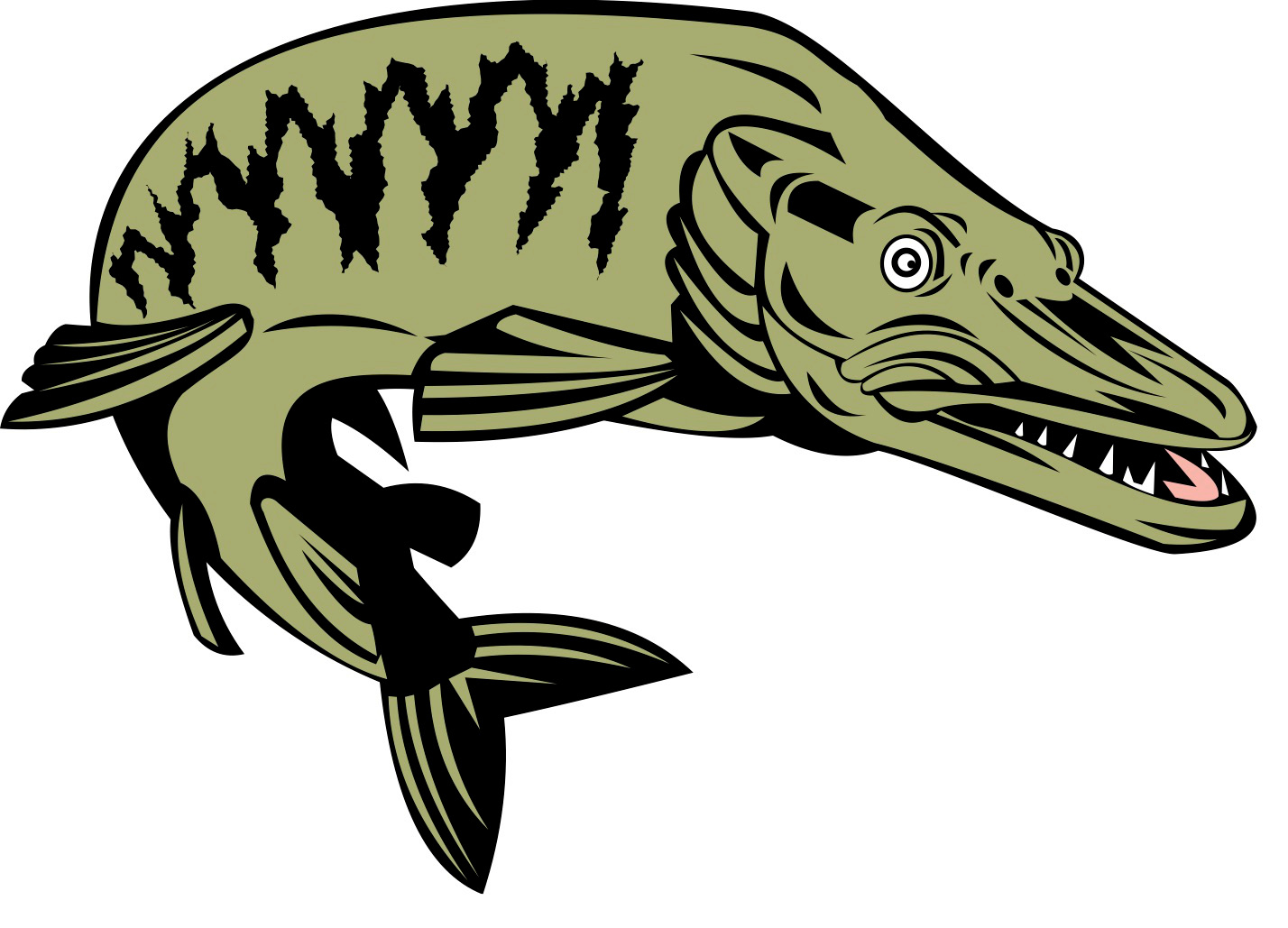Fishing for Muskie Tips & Tricks

Muskellunge: the fish of 10,000 casts. They stand alone in North American freshwater fishing circles as a pinnacle of sports fishing achievement. Growing in excess of 50” and 40lb; with a cavernous fanged mouth, a mean disposition and a line-burning burst of speed; it’s little wonder that anglers become obsessed.
And finding them is an obsession. Even in the best of muskie waters, they can’t be considered common. An elusive monster lurking along a weed line, under a log or somewhere hidden on a rocky point – it’s easy for the mind to wander. Add legends of them hunting and eating birds, dogs, even small children… what angler can resist the call of the muskie!
Identifying The Muskie
The muskellunge is the largest member of the Esocidae family, which includes the pikes and pickerels. With only the northern pike approaching the muskie in size, there are several methods of distinguishing the two. Firstly, the muskie is a light colored fish with dark makings – either spots or bars or none at all – while the pike is a dark colored fish with light markings. The muskie has pointed tips to the tail while the pikes is rounded. The muskie has scales covering only the top half of the cheek while the cheek of the northern pike is fully scaled.
Perhaps the most definite identification method is by examining the pores (indentations readily visible) lining the underside of the jaw. A muskellunge has six to nine pores on each side of the jaw while a pike has five or less.
Muskie Range and Habitat
The muskie is a fish of the north-eastern United States and eastern Canada; found in the St Lawrence River through the Great Lakes and Mississippi River basins. This area spans from Quebec into south-east Manitoba, through Iowa and across to Georgia. It has also been introduced to many other US states as well as the Red River drainage in Manitoba.
They are found in oligotrophic (geologically young, clear, deep, rocky lakes with low nutrient levels) and mesotrophic (slightly older lakes with higher nutrient loads, more sediment and aquatic vegetation) lakes; as well as rivers with plenty of deep sections and calm bays and backwaters.
As a large ambush predator, they will be found most often around structure; whether that’s weed edges or pockets, fallen timber, rocky points, bars or anything else they can use to conceal themselves. The movements of prey will also dictate where they are found – where there are little fish there will be bigger fish!
How the Muskie Ticks
The muskie is a home ranging fish. They will return to the same territories year after year if they get the chance, to take advantage of seasonal patterns in their home waters. That’s why a muskie hotspot can be great for many seasons. Food and breeding are the guiding influences here.
Spring is the time to spawn and muskie return to the same areas year after year to do so. Water temperatures getting into the 48-59°F range spark the spawning urge, with males arriving first on spawning grounds. These are shallow and warm waters with calmer bays and inlets. Males attempt to stake out a territory before females arrive. Pairs will swim together releasing eggs that sink to the bottom. Spawning takes about two weeks.
An important separation of spawning sites occurs between pike and muskie where they share the same waters. As pike spawn about two weeks earlier, muskie forgoes the prime spawning grounds amongst weeds in shallow water in favor of deeper water – around 3-6 feet. In this way the young pike that hatch first don’t eat the newly emerging muskie fry.
After spawning, but before weed beds and other aquatic vegetation get well established, prey fish are more scattered. The muskie will move into deeper water in search of mobile prey at this time of year and they can be more difficult than usual to locate. Many anglers only target muskie in shallow water with plenty of structure, but if the prey isn’t there then neither are the predators. It pays to work open water using electronics to find deep structure and bait schools at this time.
As late summer rolls around and throughout fall, the lake or river ecosystem is in full swing. With aquatic vegetation firmly established there is plenty of food living in the shallows. Now, despite the hot temperatures, muskellunge will move up into shallow water and terrorize the locals. Fish will have their own home ranges but these might be big as fish fatten up for the winter; patrolling their territories in search of a meal. This is the prime time of year to chase muskie the traditional way – in the shallows by casting and trolling lures and working big baits.
Fishing for Muskie
Now that we’ve covered a few general principles of muskie ecology, we can look at the nuts and bolts of finding and catching them.
First thing: check the local fishing regulations to understand closed seasons, catch and release requirements, bag and size limits. Catch and release is usually encouraged to protect these fish that are vulnerable to fishing pressure, and to protect trophy fish for everyone to enjoy.
What sort of fishing gear do you need to catch a muskie? The rule of thumb is ‘pretty big’. A medium-heavy action rod of 7’ (sometimes longer) matched to a decent quality reel with a strong, smooth drag and running heavy (40-80lb) braided line is the standard muskie rig. This gear is used mainly due to the size of lures and/or baits are thrown at the fish. All kinds of muskie lures and baits in the 6-12” range are common in the muskie tackle box. If you decide to throw smaller tackle, the fish are definitely a prospect on lighter gear.
A few stand out favorite lures are the Mepps Musky Killer, Musky Dawg, Suick Thriller, and large Eppinger Dardevle spoons.
Fly fishing is another popular option and rods of 9wt and heavier are required to throw large flies. Tube fly fish patterns, big deceivers, streamers as well as Dahlberg divers, poppers, mouse and frog patterns all work.
Where to Look for Muskie
Early Season
When the season opens (depending on where you are) after spawning, the fish will hang around in the shallows for a short period before moving off into deeper water to start putting on condition. Shallow bays and calmer waters are a good place to start. In waters where muskellunge are the only Esox species present, they may be right up in the shallow weedy bays, backwaters, and sloughs; in waters where northern pike occur also, the muskie will likely be a little deeper – in the 3 to 6ft range.
Cover water by casting and trolling lures. Fish may or may not be active after the exertions of spawning so do the work to get the lure in front of fish.
Early Summer
When fish move off the spawning grounds they become open water predators, hunting prey where they find it as weed growth is only in its early stages and doesn’t concentrate prey. Electronics are important for open water fishing, to identify bottom contour and structure as well as bait.
Trolling is the most effective way to run into roaming fish; with large spoons and diving, lures is a good first choice. Searching for reefs, rock, and sandbars may locate fish, as well as steeply descending shorelines and points.
Late Summer and Fall
This is the classic time of year for targeting muskie. Shallow water ecosystems are booming with extensive vegetation growth harboring all kinds of prey species. Muskie is feeding heavily and patrolling their home ranges while hunting – they are active and most likely to take a lure or bait.
Working weed edges and pockets in bays and backwaters is a sure way to find fish. Any other structure should be tested as well, casting to logs and stumps, along rocky points and in narrows. Any feature that concentrates prey offers the chance of connecting with a monster.
Lures that make their presence known are great choices. Topwater poppers, walkers, and spooks draw fish from a distance; and spinners like the Mepps Killer send out flash and vibration, with that big bucktail pulsing seductively. Swimbaits and big plastics like the Bull Dawg are also great attractors and account for plenty of trophies.
Make ‘em Eat with the Figure 8
Muskellunge (and northern pike) are well known for following lures and flies right to the boat and not striking. When this happens keep your cool! Don’t lift the lure out of the water; instead, push your rod tip down and start tracing wide figures of eight with the rod tip – swimming the lure back and forth. This technique effectively maintains the retrieve for much longer and gives the fish a chance to think about eating it. With the lure darting back and forth in front of its face, a muskie can hardly resist!
Muskie like action. Lures retrieved with plenty of activity excite them and make them want to attack – so don’t include too many pauses in your retrieves; especially if a fish is following the lure. The pause and inactivity are enough to make a fish lose interest and disappear back from whence it came.
The Legend
When a muskie hits you’ll know about it. These fish are known for their lightning fast speed and reel-screaming runs on being hooked. When a 50” monster inhales your lure, it’s hard to maintain composure… what a fish!
Where they live, big muskie is the top predators. Catching one is the dream of many an angler, and with catch and release widely practiced, more and more trophies are going back to fight another day – who knows, the next lucky angler might be you!
